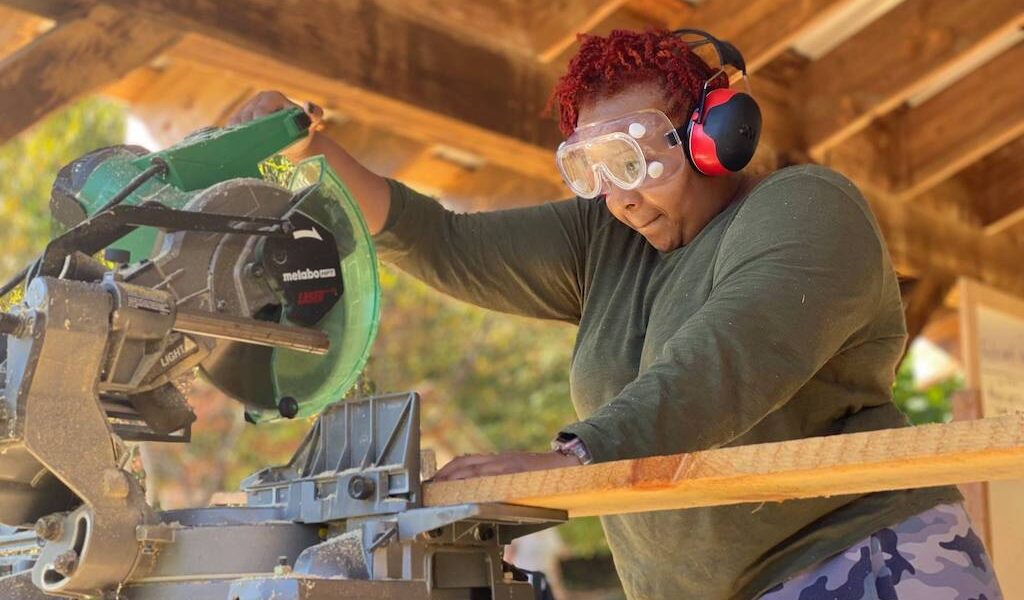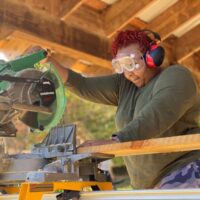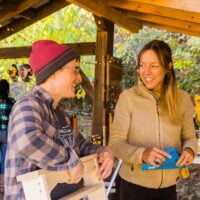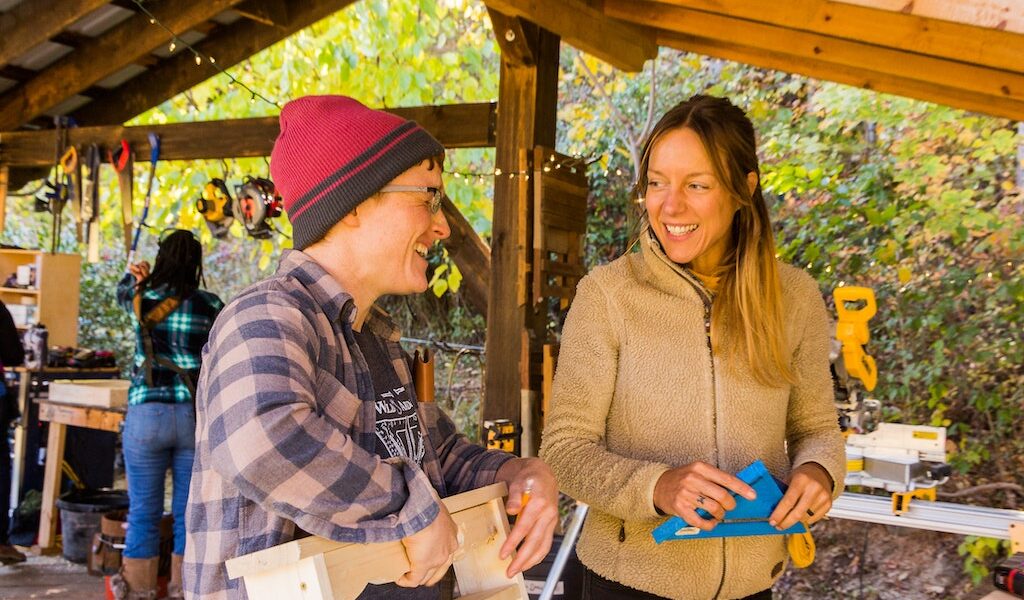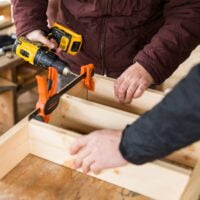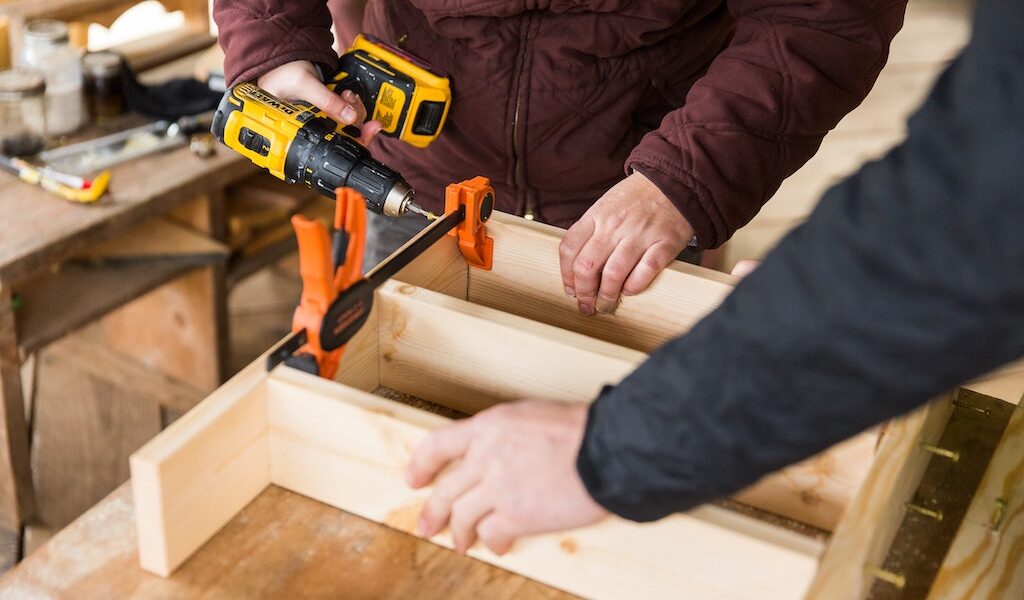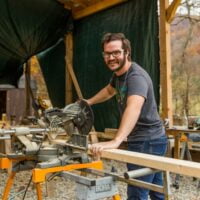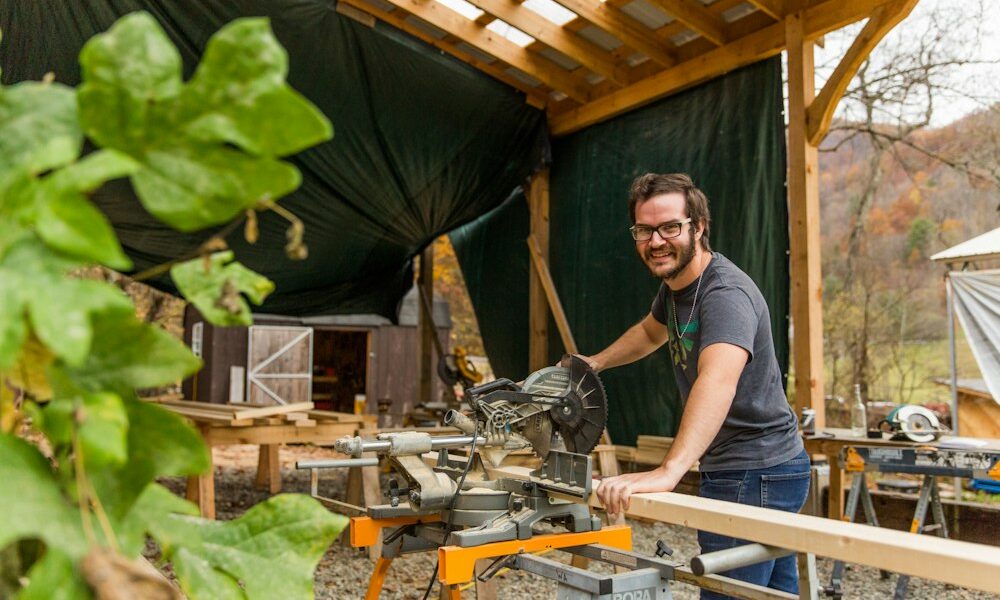Get deep satisfaction from learning carpentry in a camp-like environment
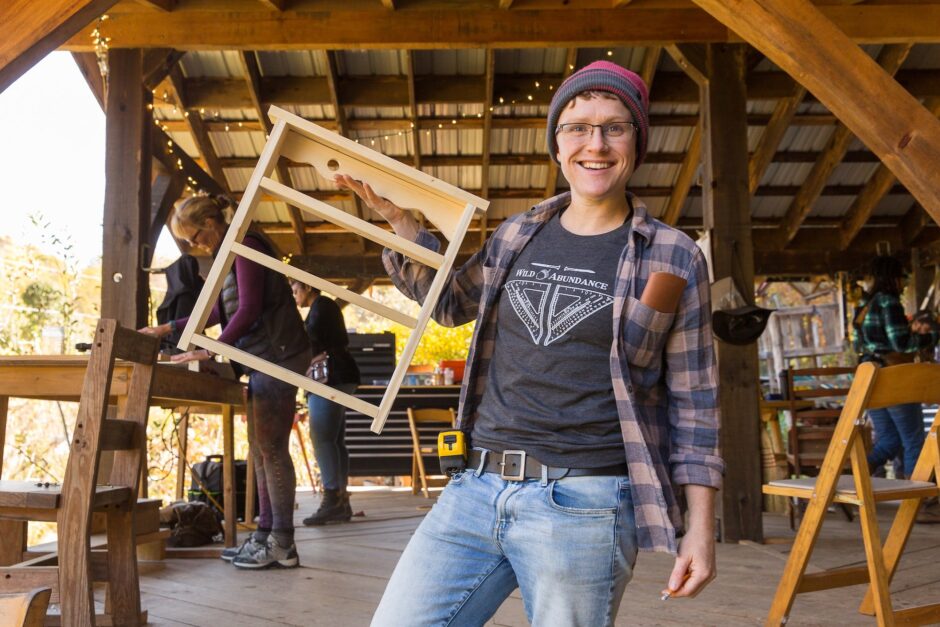

In a culture that’s zooming toward virtual reality and digitizing the day-to-day, not everyone grows up learning how to use tools and work with their hands. This carpentry and woodworking class is here to change that. Surrounded by nature in our beautiful, sheltered, outdoor classroom, it’s perfect for beginners and folks who have used tools, but don’t feel totally comfortable with them yet. Our classes are set up to foster community, and during your time here, whether you camp onsite or stay in a hotel or airbnb, you may experience the sweet nostalgia of summer camp as you make new friends and learn useful skills.
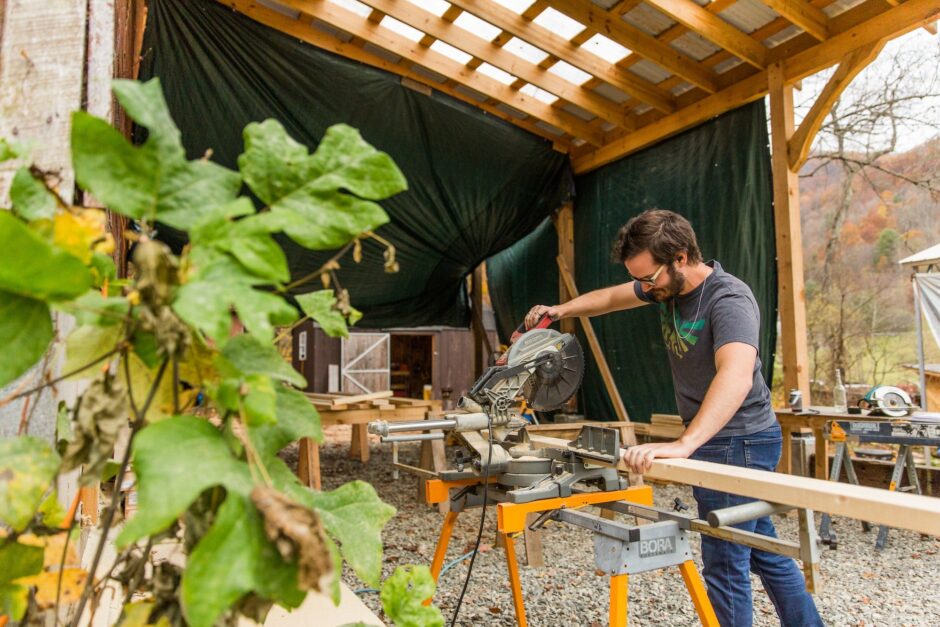

Learning carpentry can be rewarding and satisfying whether you want to build for yourself, feel confident fixing things around the house, or interacting with folks you hire in a confident way. Studies have shown that working with our hands actually increases “happy hormones” in our brains like serotonin. This class is here to welcome everyone to the world of carpentry and a more hands-on lifestyle.
We also offer Women’s Basic Carpentry Classes for women and non-binary folks who feel more comfortable in that gender dynamic.
This Asheville woodworking class is for both total beginners and those with a little bit of experience


You’ll learn to use tools and grow confident with them by working on various projects. You don’t need any experience to join this class. However, if you’ve used the table saw, chop saw, circular saw, and hand tools, but don’t feel like you have a mastery over them, this is also the woodshop class for you.
If you’re interested in bigger projects and structural building, we offer a Women’s Advanced Carpentry Class for graduates of the basic class, and a longer Tiny House Workshop. After you’ve completed the carpentry and woodworking class for beginners, you are qualified for the advanced classes.
We set the stage by creating a comfortable, relaxed, and fun environment. No pressure to “get things done,” instead we focus on learning.
What to Expect: A Four Day Carpentry Camp for Adults
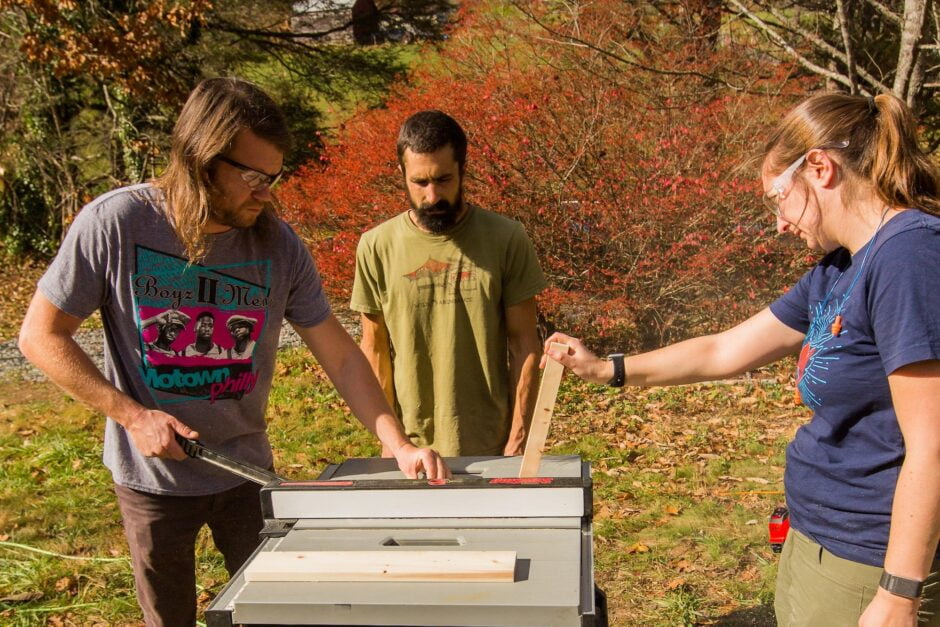

During this four-day woodworking class for beginners, we will cover basic carpentry skills through lectures, demonstrations, and lots of hands-on practice.
Topics covered in this woodworking class include:
- Learning which tool should be used for which purpose
- How to measure and cut accurately
- How to use power saws and hand tools safely and effectively
- Hand tool techniques and safety
- The basics of wood, it’s strengths, weaknesses, and how to choose the right board
- Designing and creating your own project to take home
This wealth of information will be shared in a way that meets everyone where they’re at and welcomes engagement. We firmly believe that there are no “dumb questions.”
Class Schedule and Timing
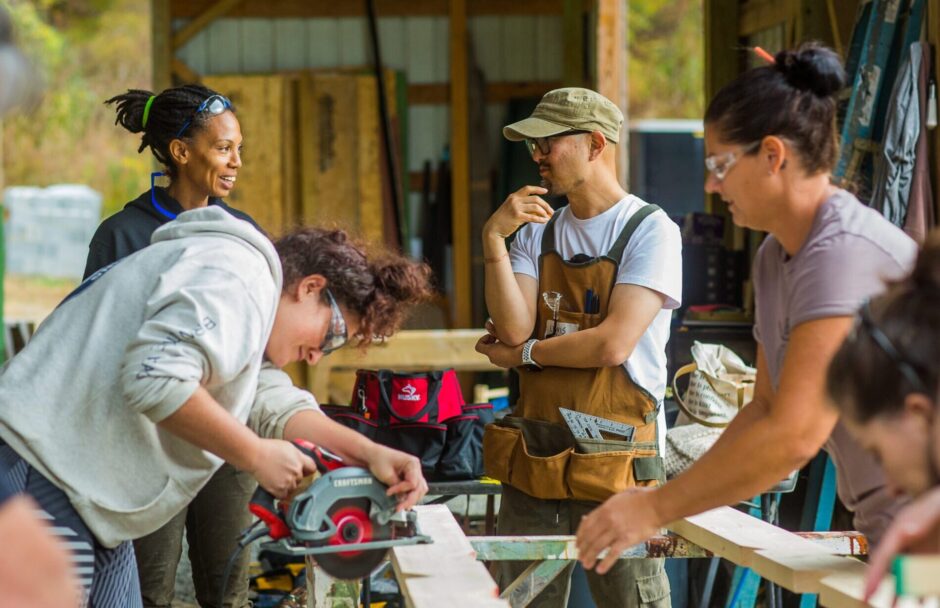

9:00am – 5 or 5:30pm* with an hour for lunch each day.
Please note: Some classes will have slight changes in the schedule due to weather, the needs of the projects, and the desires of the group.
* Class ends by 4:30pm on the last day, and students may leave whenever they finish their personal projects on this day. This can be as early as 3:00pm if they have time constraints and choose a very simple project. During our lunch break on Sunday we hold a closing circle, which we encourage everyone to stay for, if they’re able.
Day 1: Get a handle on woodworking and carpentry tools
To begin, we’ll have an orientation and overview of the wood shop and class flow and details. Then, we’ll move into tools. We’ll address which tools to use when, safety, and ergonomic use. You will get a chance to see each tool demonstrated, and then you’ll practice using it yourself, with lots of guidance and support, of course! In order to promote a sense of safety and mastery, when we get into the circular saw, table saw, and sliding mitre saw (the more intimidating tools), we break the class into three groups, to make sure everyone gets the focus that they need.
Tools we’ll cover on day one include:
- Safety equipment
- Carpenter’s pencil
- Measuring tape
- Utility Knife
- Speed square
- Table saw
- Miter saw and sliding miter saw
- Circular saw
- Chop saw
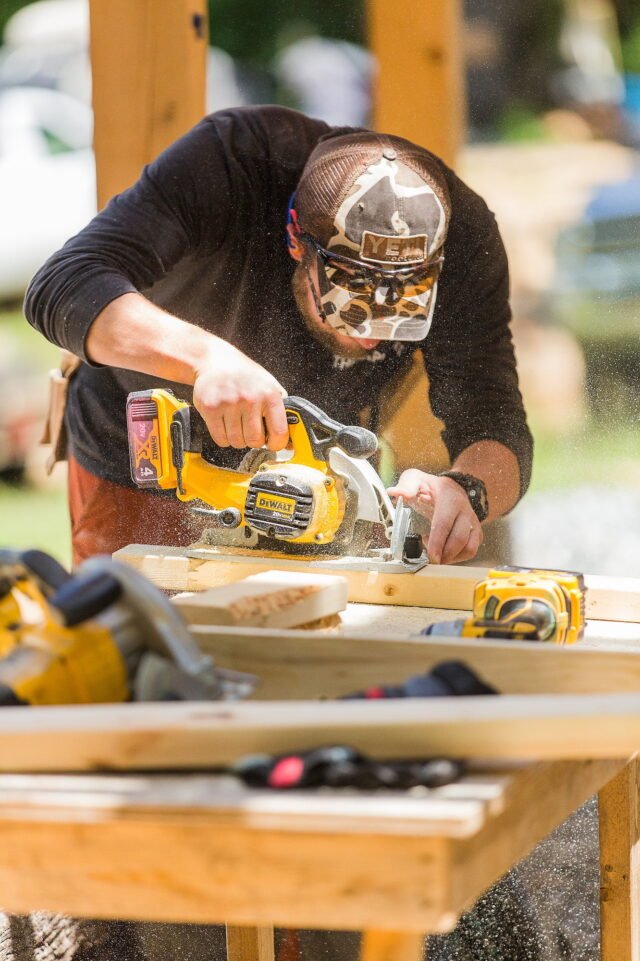

Day 2: Design of projects, other tools and a field trip
Plan out your personal project, explore more tools, and learn to navigate a lumber yard
On day two, we’ll get our hands on more tools, learning safe and proper use of drills, drivers, drill bits for making holes in wood and driver bits for driving screws into wood.
Your Personal Woodworking Project
On the second day of this woodworking class for beginners, you’ll also choose and design your own small personal project (to be built on day four). To do this, you’ll get plenty of support and guidance from the instructors. In order to ensure every student’s success within a specific timeframe, we limit personal projects to a selection of simple objects. You can choose to build a tool caddy, small shelf, or a birdhouse.
After lunch, we’ll leave the woodshop and head to the lumber yard to pick out materials for everyone’s personal projects. While we’re there, we’ll explore lumber selection and how to choose a straight board (surprise, not all boards are straight!). Before the field trip, we’ll discuss what kinds of woods are appropriate for your projects, and go over what types of screws or other fasteners you’ll need. Equipped with this knowledge, everyone will buy what they need for their personal projects, which we’ll actually build on day four.
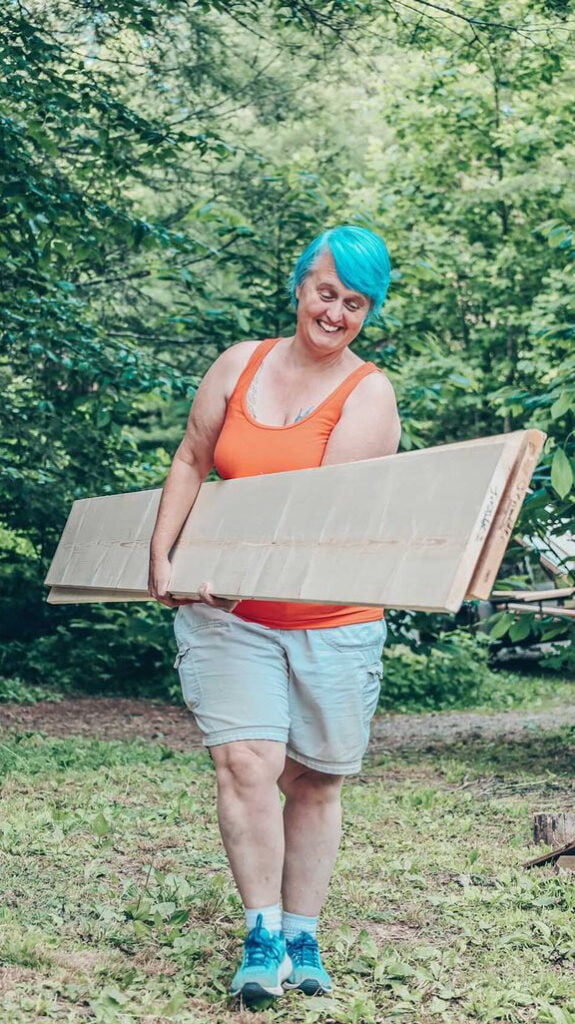

Day 3: Final Tools and Group Project
We’ll have our last tool class, covering:.
- Chalk lines
- Levels
- Hand saws
- Hammers
After lunch, we will transition to group projects. The point is not to get things done quickly, but rather to focus on gaining muscle memory and mastery of tools that have been covered already in the class.
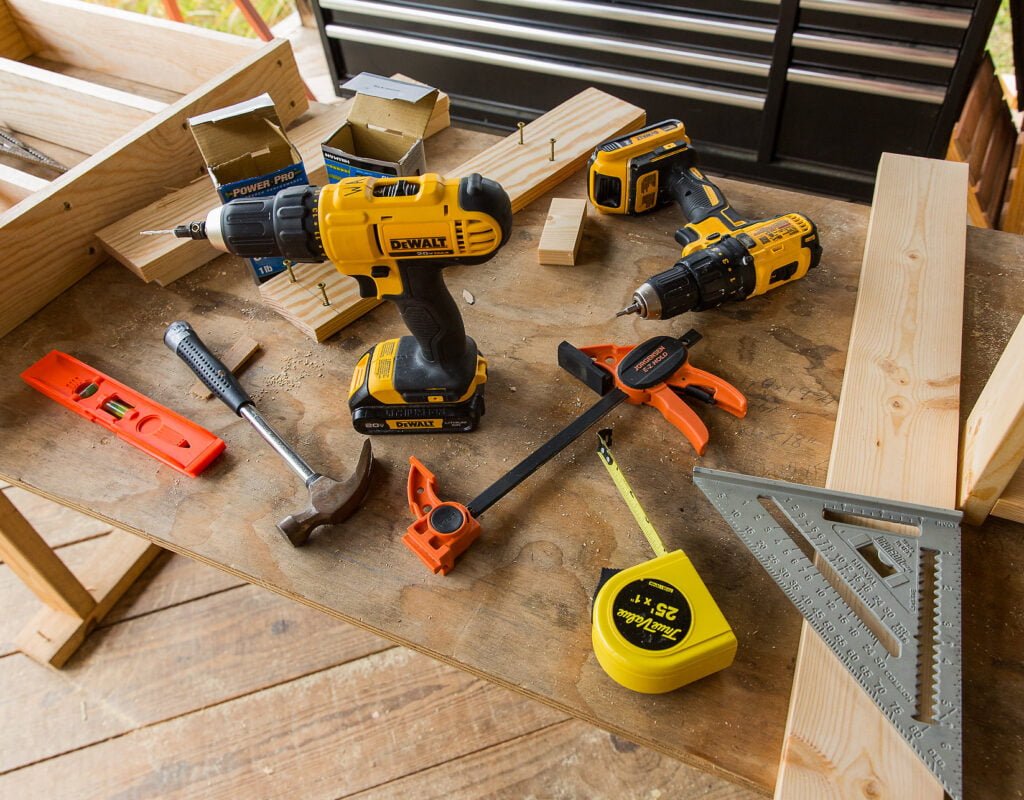

Here are some examples of what we’ve worked on in the past:
- Putting diagonal sheathing or siding on a shed or other building
- Building a picnic table
- Working on a deck
- Building a fence
- Building shelves
- Building a bridge over a small creek
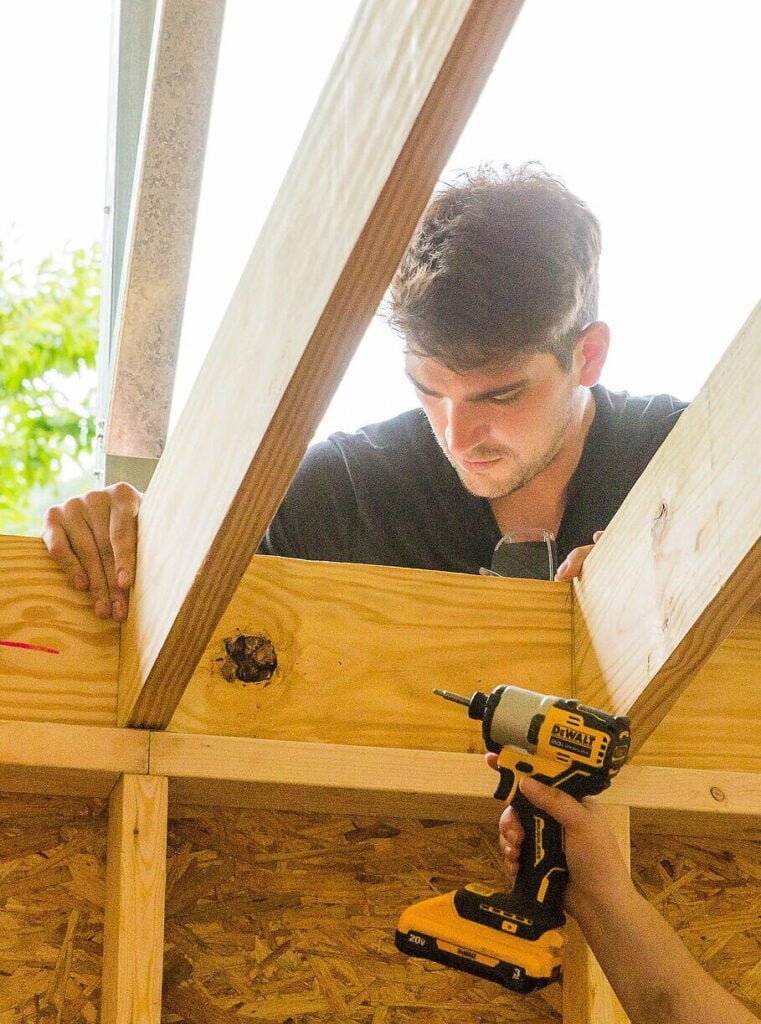

Day 4: Your Own Woodworking Project
On day two you made a cut list and a materials list, and you purchased the boards for your personal project. Day four is when you will use your design to cut your boards, assemble your creation, and fasten its pieces together. Instructors will be guiding you through the process. You’ll get support to help you complete your project and learn while doing. We try to equip our students with the skills and confidence to be able to design and create projects on your own, once you leave class.
Note on Day 4 End Time of this Woodshop Class:
We’ll close up the wood shop at 4:30pm (earlier than days 1-3). Individuals will be done with the class when they complete their personal projects (usually between 3:30 and 4:30). If you have time constraints, we advise you to choose a simple project like a small shelf.
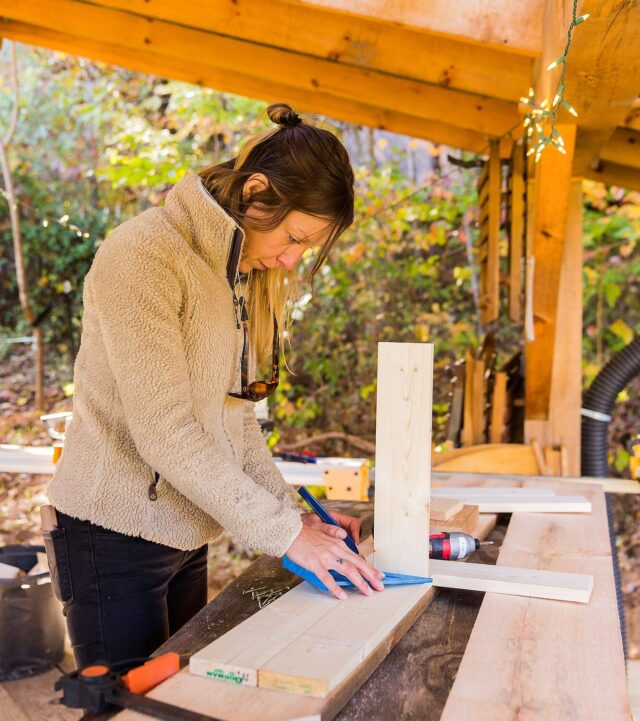

Enjoy our beautiful outdoor woodworking classroom near Asheville, NC
Our woodshop for this class is the lovely Wild Abundance homestead campus at Paint Fork Road. During the class, we work in several covered areas amidst mountain views and native plants. There, students can use tools and work on projects with fresh air and a gorgeous backdrop. As a result, many folks who come to learn carpentry also get excited about the other things we do here, like permaculture and gardening. Additionally, getting to learn and work in this simple, outdoor wood shop can be very inspiring. Please note: class happens mostly outdoors (under cover), rain or shine, whatever the temperature.
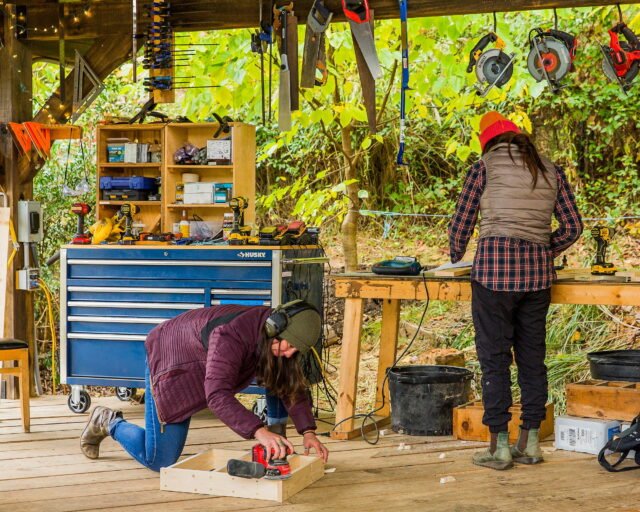

Build your ideas into reality in this woodworking class for beginners
You might be asking yourself, can I really learn carpentry in a weekend woodworking class for beginners? And we’re here to tell you that, yes, it’s absolutely possible! In one long weekend, you can understand how to work with wood, get comfortable with tools, and learn how to plan out and design your own simple carpentry projects. We’ve seen it happen time and again, with hundreds of satisfied students.
Of course, people spend lifetimes perfecting their woodworking skills, especially those who build houses or do fine finish work like cabinetry or furniture making. It’s not realistic to learn to do these high-level kinds of projects in a long weekend workshop. However, you can take the first steps that every carpenter and fine woodworker once took. And you’ll leave with the ability to turn your basic ideas into reality, right away.
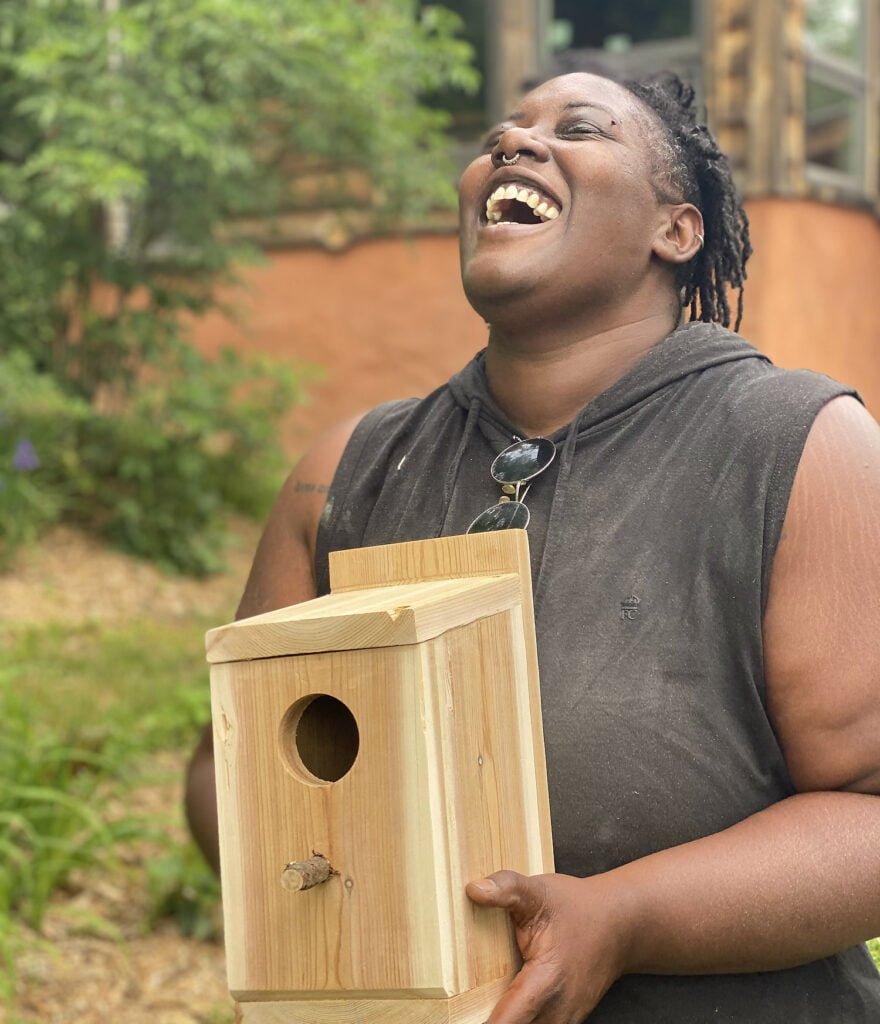

Frequently Asked Questions about the Basic Carpentry and Woodworking Class
Instructors
Nadi Mond
Nadi (they/them) has been on a quest to study traditional woodworking, metalworking and ancestral skills ever since leaving behind their Aerospace Engineering path in Germany where they grew up. While attending University in Germany they turned an old early 1900s circus trailer into their first tiny home they lived in for the duration of their ...Alex Kilgore
Alex (he/him) has been learning and teaching primitive and traditional living skills since 1995. He began with a formative apprenticeship with Steve Watts, the founder of the Society of Primitive Technology and director of the Aboriginal Studies Program at the Schiele Museum of Natural History. In 1997, Alex completed his degree in Outdoor Experiential Education ...This class is held near Asheville, NC, at the Wild Abundance Paint Fork Campus
Our Paint Fork campus is a bustling creekside landscape with gorgeous mountain views, a breathtaking timber-framed pavilion classroom, and spacious covered open-air wood shops for learning building and carpentry in all weather, plus other lovely features. The Paint Fork campus is 30 minutes north of Asheville.
Please note: our campuses are all unconventional, with rustic amenities and uneven ground. Read more about Planning your trip and about our campuses. You’ll receive detailed directions on how to get here upon registration.
Pricing for All Gender’s Basic Carpentry
Regular Pricing: $850 – $1,700
Please pay what you can afford. The median price is suggested to help cover the full cost of hosting this class. Please select the low end of the sliding scale if you are low income. If your household income is over $115,000/year, please select the maximum fee. Please place yourself in this range where you deem appropriate, based on your income.
Course Date:
Sep 26-29, 2024(filled)
Join the WAITLIST to be the first to know when new sessions open.
You'll also receive our newsletters

